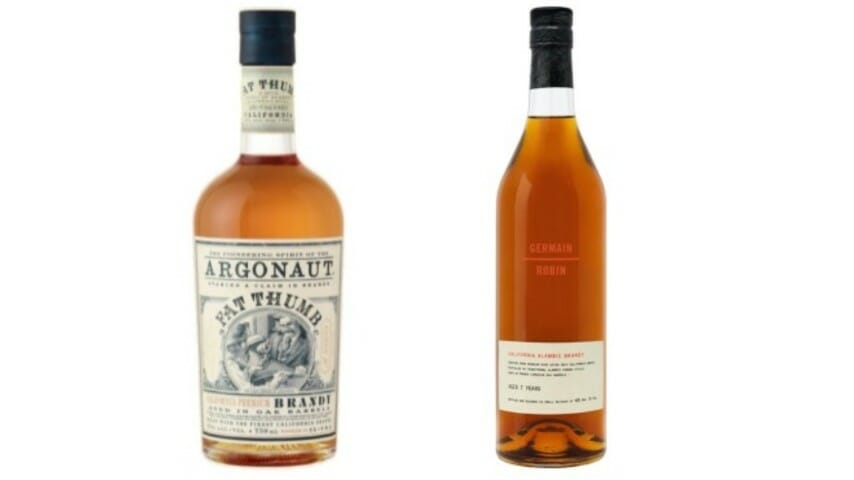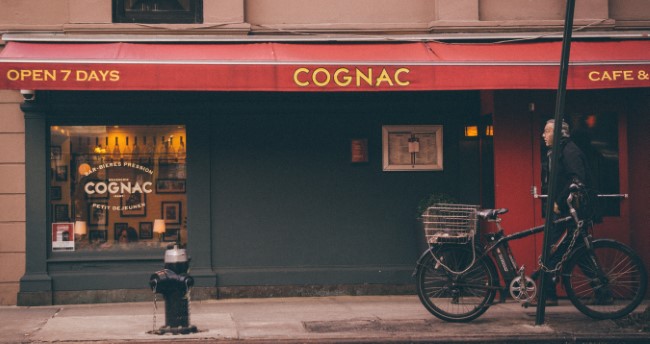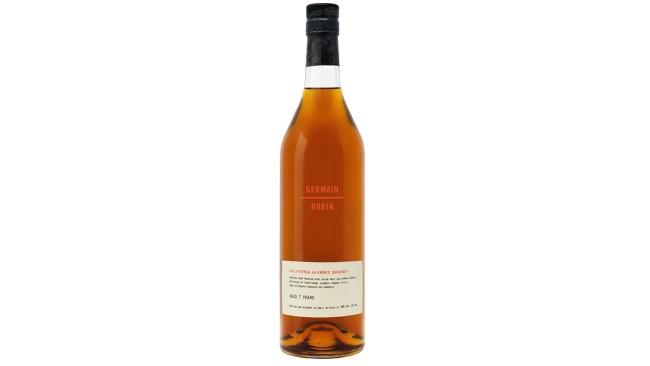Fruit of the Vine: A Whiskey Geek’s First Venture into Quality American Brandy
Photos via Argonaut Brandy, Germain-Robin, Unsplash, Hans Vivek Movies Features brandy
Considering the sheer amount of whiskey writing I’ve produced for Paste in the last few years, and the supplementary pieces that have increasingly revolved around spirits such as rum or gin, it might be surprising for me to admit that brandy has been an almost entirely blank page in my spirits journey. I have a bottle or two of brandy in my home, sure. There are a few cocktails I know that call for it in small portions, and I might occasionally use it while cooking some kind of French cuisine. But considering the breadth of spirits I regularly consume, the almost total omission of brandy has long been something I’ve thought I should rectify.
Thing is, though … I’ve never been terribly fond of brandy in the past. It always struck me as something I was curious to sample, but rarely excited my palate or ignited my interest when I sampled some, at least in comparison with other aged spirits such as whiskey or rum. And I’m hardly alone there—American consumers often seem to not now quite what to make of brandy, a spirit with distinctly “European” connotations, even though it’s been produced in the U.S. for centuries. This is especially true of American whiskey (re: Bourbon) aficionados, many of whom barely seem to venture outside their comfort zones to include rye whiskey or scotch, let alone aged rums or brandy. What I’ve come to realize, however, is this: I simply hadn’t had the right brandies yet.
Brandy, I am coming to realize, is just as varied and rewarding a category as the other major spirits that receive aging in oak barrels. Like whiskey or rum, brandy can derive complexity and variation through both the makeup of its distillate (i.e., different varieties or blends of grapes) and distillation techniques/aging processes. But because brandy tends to still be so poorly understood by the average American consumer, let’s start with a brief definition before I taste a few California brandies that pleasantly upended my expectations.
A Basic Brandy Definition
You likely understand that “brandy” refers to a fermented grape product that has then been distilled into a spirit/liquor, but that’s where we must begin. The term “brandy” is a catch-all, including every grape (or fruit) product that is fermented and then distilled and aged. The word “brandy” therefore also works if we’re talking about apple brandy, peach brandy, etc.—those may imply spirits fermented and distilled specifically from those fruit juices, or they may be the more common grape brandy with additional fruit essences added. Suffice to say, the word “brandy” is like the word “whiskey,” in the sense that it can mean many different things.
You’ve also likely heard the terms “cognac” and “armagnac.” These are both specific, famous styles of French brandy that have more detailed definitions and quality standards. Cognac may only be produced in the Charente and Charente-Maritime regions, and is typically made with a single white grape varietal, Ugni blanc. It’s distilled in copper pot stills and aged at least two years in French oak barrels from Limousin or Tronçais, but is often aged far longer. Armagnac, by comparison, is produced in the Armagnac region of Gascony, and is distilled from a wider range of grape varietals that include Baco 22A, Colombard, Folle blanche and Ugni blanc. Notably, it is traditionally produced in column stills rather than pot stills, which obviously makes for a significantly different spirit overall.
 Americans tend to think of brandy and cognac possessing a certain European sophistication.
Americans tend to think of brandy and cognac possessing a certain European sophistication.
American brandy, meanwhile, enjoys a rather looser set of definitions and restrictions than those placed on a tightly defined product such as bourbon. Most of it is just referred to as “brandy” rather than any regionally specific title, although the law does require that products including any other fruit much by labeled “with a clarifying description” such as “fruit brandy,” “pomace brandy,” etc. There is also no minimum age requirement, except for the fact that brandy aged in oak for less than two years must be labeled as “immature,” which is unsurprisingly an undesirable label. In this way, brandy aged in oak for more than two years in the U.S. is akin to the “straight” designation for bourbon, which likewise implies at least two years of aging.
Perhaps most important, though, especially to California brandies (where the most U.S. brandy is made), is the fact that U.S. brandy can be made with any and all grape varietals, taking advantage of the wide selection of popular wine groups grown up and down the length of the state. This results in a variety of brandies with flavors that are significantly different from what one can expect in European brandies.
Tasting: Argonaut and Germain-Robin California Brandies
This particular exploration of California brandy was kicked off by a press release I received—a typical PR release of the sort that we drink writers receive dozens of every day, except for the fact that it was in reference to a spirit I genuinely wanted to explore in more depth. Specifically, this press email was offering samples from two California brandy companies both owned by wine industry kingpins E&J Gallo. The company’s own namesake brandy is one of the first that you’re likely to stumble across on a supermarket shelf, but the two companies highlighted in this article focus on producing a much more premium and intricate product, and exclusively distill and age brandies. They are Argonaut Distilling Co. and Germain-Robin, and both proved to produce brandies that enticed me like none of the examples I’d ever tasted before.
Argonaut Distilling Co. Fat Thumb California Premium BrandyMSRP: $50

Argonaut is a company that focuses entirely on complex blends of brandies, each of which contains many different distillates made from different grapes or grape blends, aged for wildly varying amounts of time and then blended together as one would in the making of a classic Bordeaux or Meritage wine. It’s clear just looking at the makeup of each blend that this is clearly a very sensory-driven process.
Fat Thumb is a moderate strength (43% ABV, 86 proof) brandy blend of 7 different distillates, ranging in age from 4 to 16 years in oak, with portions distilled both in alembic (also spelled “alambic”) pot stills and coffey column stills, in a method similar to some rum blends. It doesn’t specifically state what kind of oak it was aged in, but I wouldn’t be surprised if it was French in origin.
It’s immediately clear on the nose that this is unlike other brandies I’ve sampled in the past—where those were often defined by relatively simple, bright fruity notes, this is much more clearly an aged spirit that has been transformed through time in the oak, in a manner that would be much more familiar to your average whiskey drinker. On the nose, I get notes of toasted bread with honey, along with hints of baking spice (allspice?) and slowly emerging fruit that steadily takes on an exotic, pear-like (spiced pear) dimension. Stone fruit is there as well, with something that falls between apricot and peach, but I quite enjoy the way those fruit notes are being met with the influence of the barrel.
On the palate, Fat Thumb showcases some lovely, honeyed notes and light oakiness, which on first inspection put me in mind of some classic single malt whiskies. Presented with this completely blind, and without much of any experience in brandy, I probably would have identified it as a non-peated Highland scotch: Fruity and rich, with pear-like notes and some vinous characteristics, met by spice and some light cocoa and oak. The heat level is also nice, gently letting you know it’s there while also being plenty inviting and accessible.
All in all, I was genuinely shocked to find how much I immediately enjoyed this stuff. At a roughly $50 MSRP, it compares nicely in terms of complexity with most of the single malt scotch available in that neighborhood, and after tasting this, I think that non-peated scotch really is the best comparison. It certainly makes it clear that my home bar has been missing higher quality brandy for far too long.
Germain-Robin California Alambic BrandyMSRP: $75

Compared with the Argonaut offering, which is built around creating a complex blend of many distillates, the German-Robin flagship California brandy is more recognizably a product of a single place and time—something that wine aficionados are likely to innately understand. Specifically, I believe this is all California-grown Colombard grapes, and the Germain-Robin website states clearly that this is “distilled exclusively in Pruhlo Charentais Pot Stills,” so there’s no column distillate this time around. Germain-Robin brandy is then aged in Fench Limousin oak, which likely contributes to its higher price tag at least a bit. This one carries a 7-year age statement, whereas the brand’s XO expression is apparently an average of 17 years old—note to self, try that one at some point.
On the nose, the age and oak presence of Germain-Robin can certainly be felt, as the French oak contributes its wonderful, signature tones of sweet spice and toffee-like caramelization. There are some similar flavors here to the Argonaut Fat Thumb brandy, but the depth of oak character extends even deeper here, with more nuance and layers—and I get correspondingly less “fresh” fruit characteristics. With that said, I do get notes of apple and stone fruit, but on the palate what really stands out to me are the delicious impressions of chocolate and coffee that are coming out, and those French oak spices. Over time, some more fruitiness emerges, and the palate takes on something of a “peach cobbler” dimension that is quite enjoyable. It pairs well with some of the roastiness and caramelized sugar notes I’m also getting.
All in all, it’s another brandy I find myself enjoying very much—hardly what I was genuinely expecting, when I said “I should really expand my horizons and drink a few new brandies.” It just goes to show that whether you’re a spirits writer or a casual drinker, it really pays to remain open minded to new experiences. In particular, I think it was my increased appreciation for malt whisky over the last few years that has paved the way for my new appreciation of brandy—they have a common thread of fruit-driven flavors (at least in some cases) that helped bridge the gap between brandy and other spirits in my mind.
I look forward to sampling more California brandies in the future.
Jim Vorel is a Paste staff writer and resident brown liquor geek. You can follow him on Twitter for more drink writing.